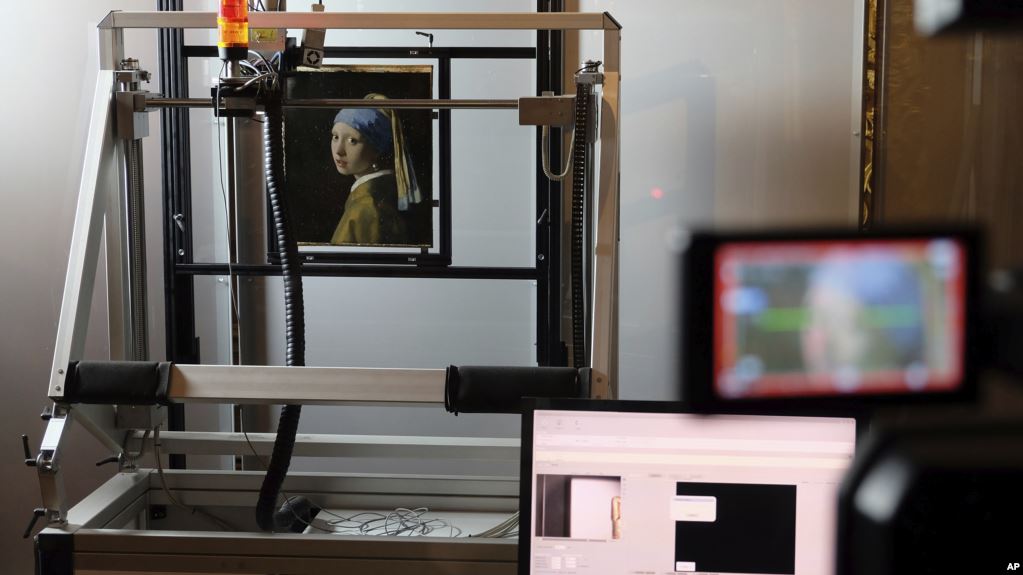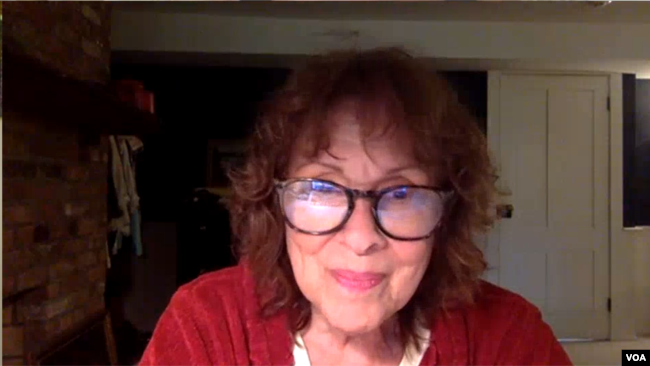


Researchers have used high technology methods to learn secrets about a famous painting by the Dutch painter Johannes Vermeer.
The painting is called “Girl with a Pearl Earring.” Vermeer is considered one of the masters of his art. He worked during the Dutch Golden Age of painting in the sixteen hundreds.
The researchers’ tests have not discovered the identity of the mysterious woman in the painting. But, they have revealed important information about how Vermeer did the painting, which is sometimes called the Dutch “Mona Lisa.”
In an online presentation this week, Martine Gosselink, Director of the Mauritshuis museum in The Hague, described some recent research findings.
“Sadly we didn’t find out who this young lady was and if she ever really existed. But we did get a little closer to her,” she said.
Researchers and museum workers placed the painting in a special glass room in early 2018 so visitors to the museum could watch as researchers studied the work.
A careful examination of very small pieces of paint showed where some of the painting’s pigments came from.
The white that helps form the earring comes from lead from the Peak District in northern England.
The blue is made from a valuable stone found in Afghanistan.
The red is made from insects that live on cactus plants in Mexico and South America.
Abbie Vandivere was leader of the research project. She expressed surprise that Vermeer used so much blue in the painting, noting: “This blue pigment was more valuable than gold in the 17th century.”
Vermeer, however, did not have to travel the world to get his materials. He most likely bought them in his hometown of Delft.
This reproduction shows Johannes Vermeer’s Girl with a Pearl Earring (painted approximatetely 1665) at the renovated Mauritshuis museum during a preview for the press in The Hague, Netherlands, Friday, June 20, 2014.
This reproduction shows Johannes Vermeer’s Girl with a Pearl Earring (painted approximatetely 1665) at the renovated Mauritshuis museum during a preview for the press in The Hague, Netherlands, Friday, June 20, 2014.
The research findings do not just show details about Vermeer’s materials, “but also tell us about Dutch and world trade in the 17th century,” Vandivere said.
The research also uncovered the order in which Vermeer painted the girl on a piece of cloth.
Infrared imaging showed that Vermeer began making the work using brown and black paint. He then drew the girl’s outline in black lines before working from the green background to the foreground.
“The girl has, sadly, not revealed her identity, but we have got to know her better,” Gosselink said.
A statement on the museum’s website describes the woman as imaginary. The painting “is not a portrait, but a ‘tronie’ – a painting of an imaginary figure,” the website says.
But, the public will have to wait until they can see the painting in real life. The Mauritshuis is currently closed, along with all other Dutch museums and galleries,
These closures are because of restrictions aimed at slowing the spread of the new coronavirus.
I’m John Russell.
برای اطلاع از برنامههای اربیتاس در خبرنامه ما عضو شوید
ما وبسایت کوچینگ ، مشاوره و راهبری زبان انگلیسی و زبان های خارجی هستیم ، هزاران راه و روش برای یادگیری زبان وجود دارد که گاهی ما را گیج و سرخورده میکند ، اربیتاس یار همراه شماست تا با برنامه ریزی و راهنمایی اهداف و نیازهای متناسب شرایط شما را شناسایی کند و شما را به هدف مورد نظرتان برساند
025-37788819
09302115278
09360617463